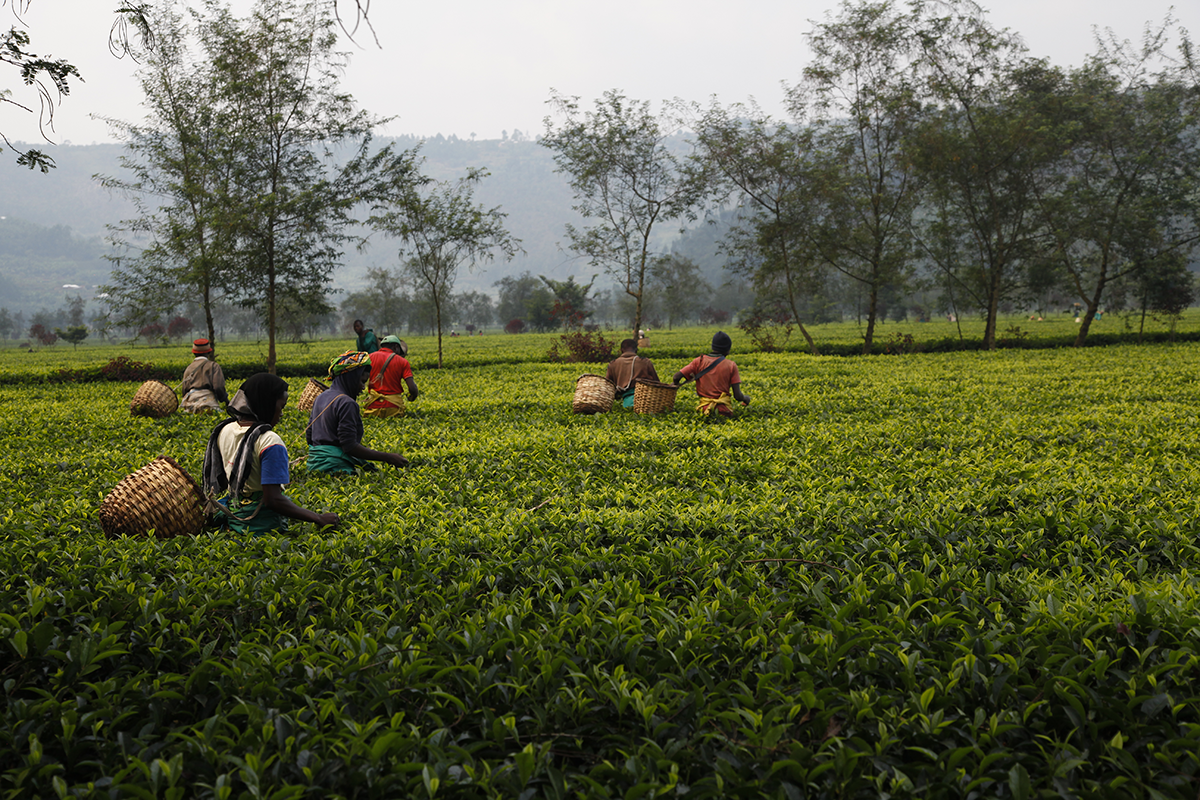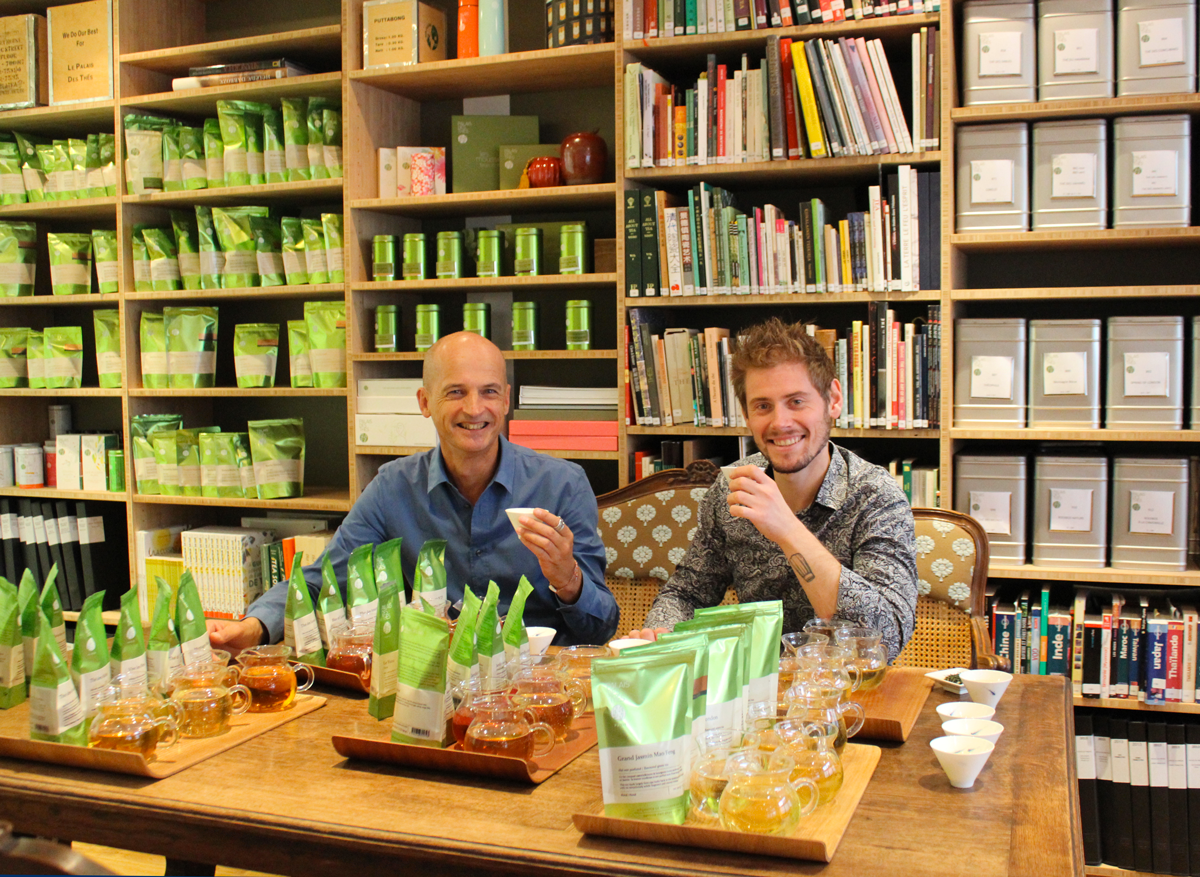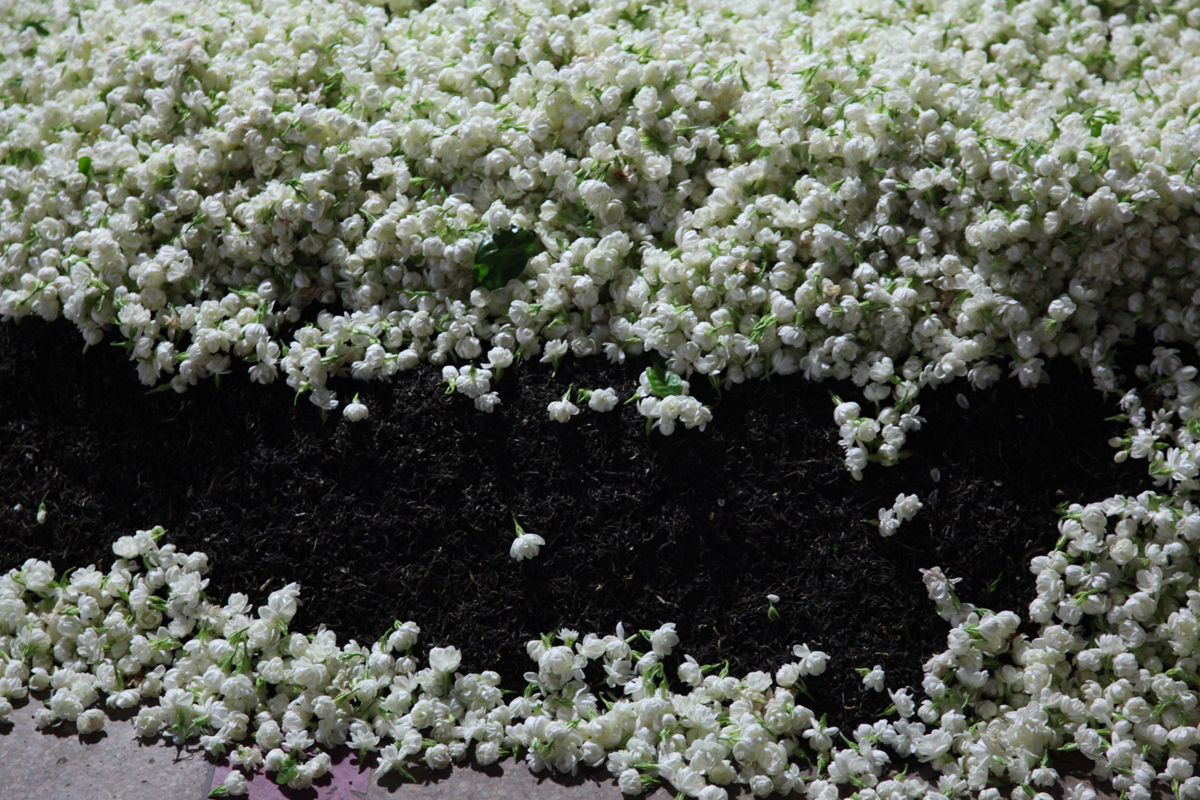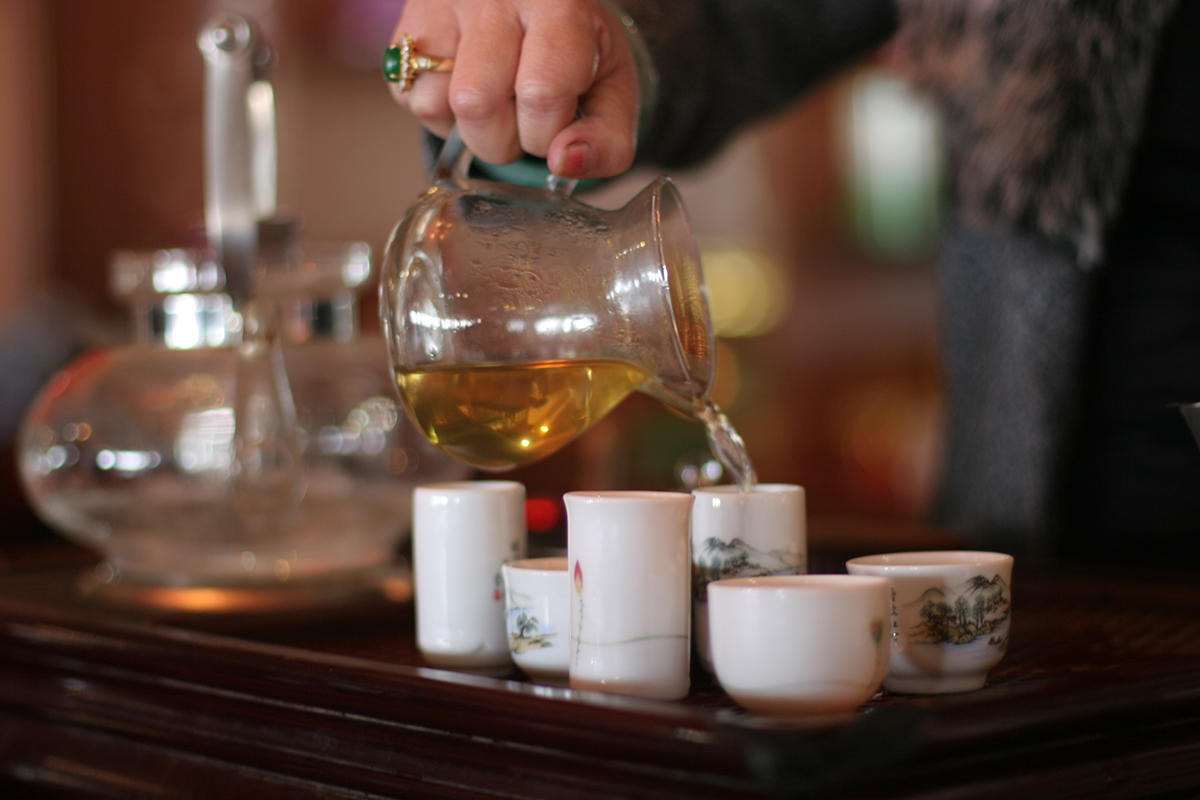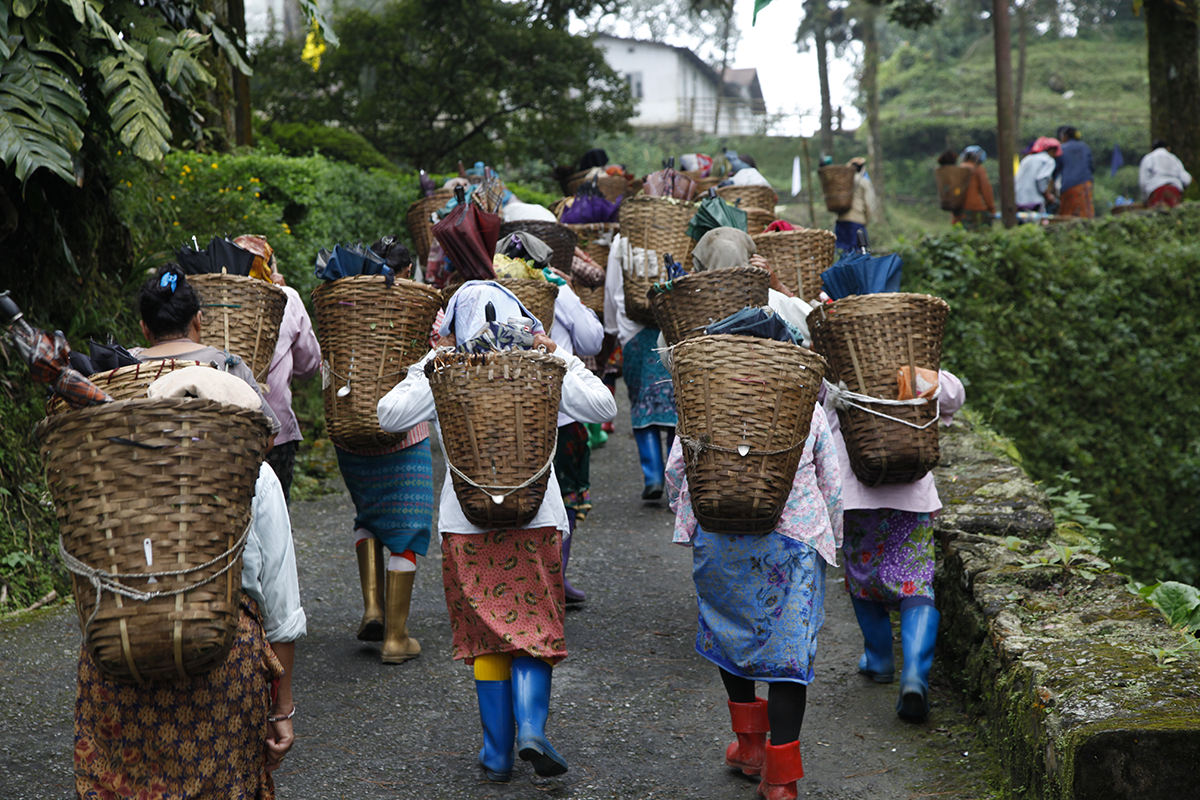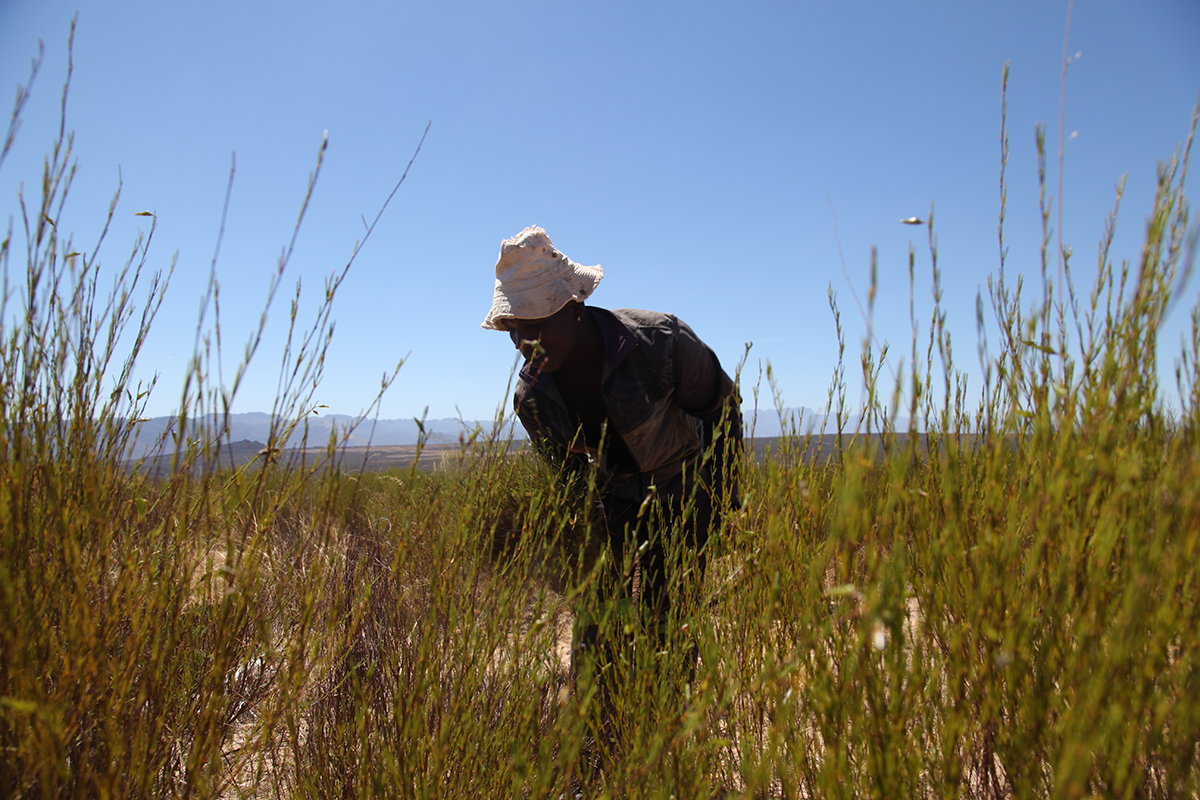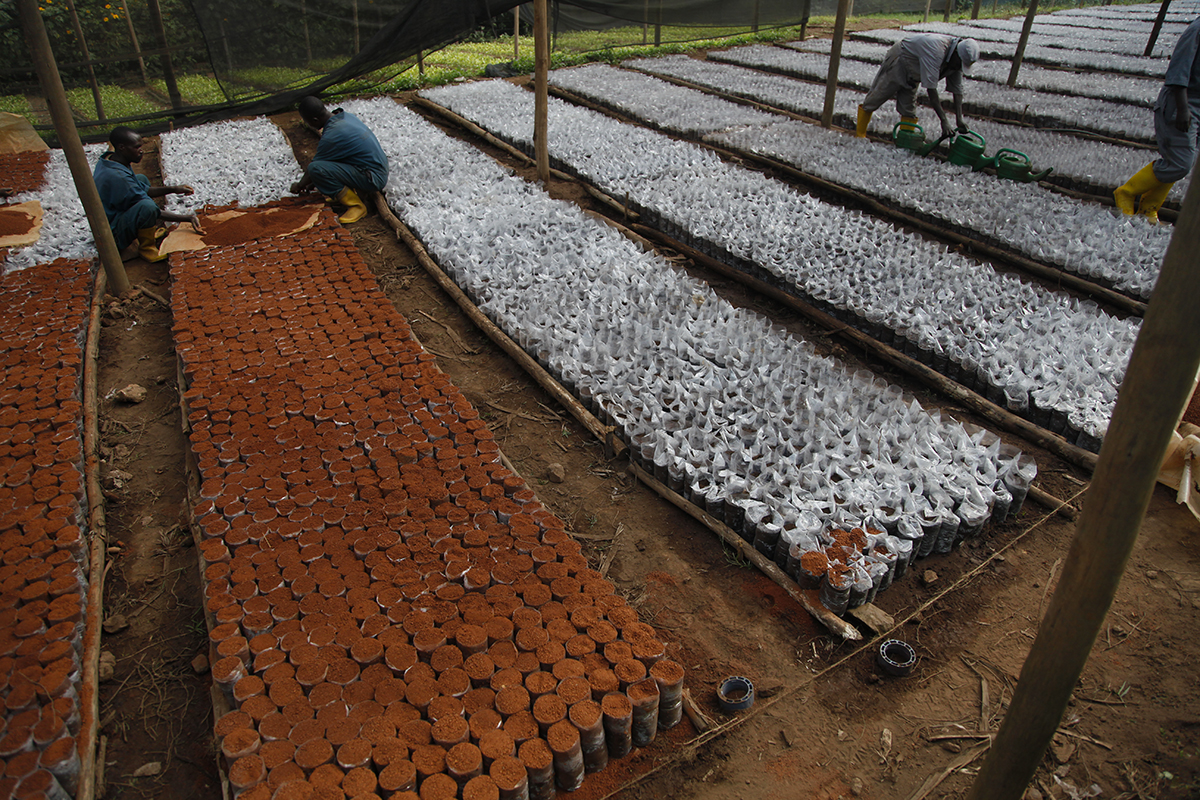When I’m looking for premium teas, I look at what the farmers and plantations I already know are producing. I also look for new farms, sometimes in new regions, sometimes in new countries. Sourcing premium teas is like starting from scratch every time. When it comes to rare and exceptional teas, there is no guarantee that a reputable producer will be able to make a tea as amazing as the previous year’s. You have to try the teas, blind, so you’re not influenced by the prestige of a name or your goodwill towards a farmer. And sometimes you have to pack your bags and set out on an adventure. Rwanda, for example, can produce some very good teas, and is among the countries I intend to return to soon and explore different plantations.
ARCHIVE FOR 2018
With Bryan Esposito, pastry chef at the Collectionneur Hotel in Paris
Part of my job is to introduce the incredible variety of flavours among teas to current and future chefs. This is the flipside of my work out in the fields with the farmers. On the one hand I select premium teas; on the other, I help chefs understand how to use them. There are teas of different colours, different origins and also of different varieties. These differences create the range and variety in the gastronomic qualities of tea. You have to taste them to understand, which is what I’m doing here with Bryan Esposito, pastry chef at the Collectionneur Hotel in Paris and former pastry chef at the Westminster Hotel. Introducing someone to the great range in the flavours of teas also means explaining the best way to obtain the liquor for the intended use. The amount of tea used, and the time and method of infusion, will differ depending on whether you want a liquor to be consumed as it is or used in a recipe. It is interesting to experiment with different aspects of the infusion method, including cold infusion, which opens the way to many uses in the kitchen. It goes without saying that I’m looking forward to tasting Bryan’s new creations!
The art of making jasmine tea
The world’s finest jasmine teas are produced in August and September in Fujian province (China). They are made using a green tea base, and as the best green teas are harvested in April, the necessary quantity is reserved at the time. The jasmine flowers on the other hand, are picked at the end of summer. Jasmine flowers open in the evening, when they release their fragrance. When this happens, they are placed in layers with the tea leaves, impregnating them with their heady scent. Throughout the night they are mixed together to ensure the leaves have absorbed as much of the fragrance as possible. When day breaks they are separated, before the jasmine flowers turn bitter.
Tasting premium teas with Anne-Sophie Pic
This week I had the immense pleasure of tasting a fine selection of premium teas with Anne-Sophie Pic and her team of sommeliers. Anne-Sophie is such a kind and considerate person and treated me like royalty in Valence. She is eager to learn and so generous with her time, especially considering she’s the only French woman to hold three Michelin stars. She listens attentively and asks plenty of questions. Together, we tasted teas infused, both hot and cold. Our tastings took us to Darjeeling and Japan via Nepal, South Korea, Viêt Nam and even Africa. We talked about ways to use tea in cooking, and possible pairings between teas and dishes. It was incredible to contribute, however modestly, to her inspiration! And what a treat to share an unforgettable meal with her afterwards, an explosion of textures, flavours and aromas. Thank you Anne-Sophie.
One cup for smelling, another for tasting
The use of an aroma cup offers a unique tasting experience. It allows you to focus on olfaction – the smell. As soon as it has been filled, the aroma cup is emptied into the tasting cup. The former retains the tea’s aromas thanks to its tall, narrow shape. You lift it to your nostrils and try to distinguish each note left by the liquor. A few minutes later, you taste the tea itself, by which time it will be at the perfect temperature.
In favour of fair pay
How much longer will tea be harvested by hand in India, where there is ongoing conflict over employment conditions? The pickers are demanding justified pay rises, but the plantations are only just profitable, while some are even loss-making. Tea is already sold at a high price without the benefit being passed on to local populations. Do we risk seeing mechanical harvesting replace manual picking due to a lack of workers? And what will be the consequences on quality? Or are we moving towards plantations being turned into cooperatives so that everyone has a stake in them and can live decently on their wages? These questions have not yet been answered.
Tea and joy
Kolkata, formerly Calcutta, is known as the “city of joy”, but it’s also the city of tea. All the producers of Darjeeling and Assam teas have their office there. Auctions take place in the historical district of BBD Bagh, supplying the lifeblood of a whole economy. And the precious cargoes of tea are dispatched from the city’s port.
Kolkata, a sprawling city of ten, fifteen, even twenty million inhabitants – who knows? – extends outwards from the banks of the Hooghly River, a tributary of the Ganges. Its public transport system includes many boats which offer a peaceful crossing, away from the busy traffic.
Limited production
In South Africa, the only country that produces Rooibos, 350 farmers grow it as a crop. Australia and California (United States) tried to grow Rooibos, but failed.
Rooibos is harvested when temperatures are high, by workers who often come from neighbouring countries.
Rooibos, a recent crop
Although rooibos has been consumed for centuries, it has only been grown in recent times. In the mid-19th century, a German priest from Namibia founded the village of Wupperthal in South Africa. He imposed strict rules on the community and set about organising the cultivation of rooibos. Halfway between the Cape and Namibia, Wupperthal is in the middle of the desert. Rooibos, or Aspalathus lineari, is about as undemanding as a camel, and can withstand extreme heat without complaint. The plant’s roots push deep into the ground, which helps it find nourishment. Wupperthal is worth a visit. It’s a journey of several hours along a difficult track, which nonetheless offers some beautiful views for those who like their landscapes arid.
Multiplying tea
These days, tea is grown from cuttings, not seeds. The cuttings are raised in nurseries. Each nursery cares for thousands of plants at a time: their needs for light and water differ, depending on their age. When the cuttings are two years old they will be planted out in the ground. As they grow, they’ll be pruned into the right shape to optimise the harvesting of the young shoots.

